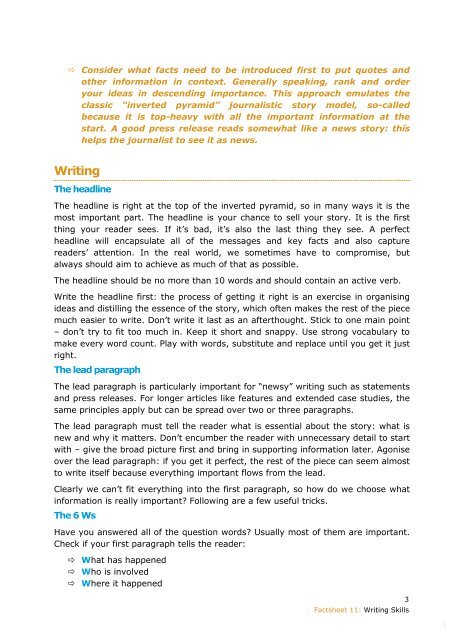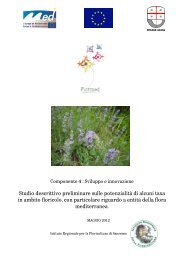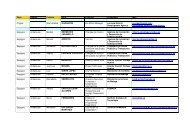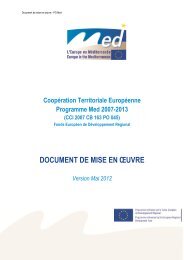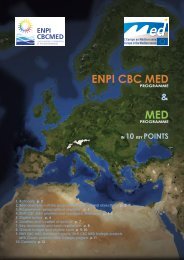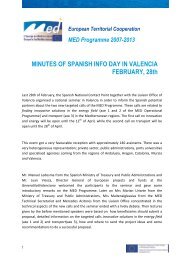MED Communication Handbook - Programme Med
MED Communication Handbook - Programme Med
MED Communication Handbook - Programme Med
You also want an ePaper? Increase the reach of your titles
YUMPU automatically turns print PDFs into web optimized ePapers that Google loves.
� Consider what facts need to be introduced first to put quotes and<br />
other information in context. Generally speaking, rank and order<br />
your ideas in descending importance. This approach emulates the<br />
classic “inverted pyramid” journalistic story model, so-called<br />
because it is top-heavy with all the important information at the<br />
start. A good press release reads somewhat like a news story: this<br />
helps the journalist to see it as news.<br />
Writing<br />
The headline<br />
The headline is right at the top of the inverted pyramid, so in many ways it is the<br />
most important part. The headline is your chance to sell your story. It is the first<br />
thing your reader sees. If it’s bad, it’s also the last thing they see. A perfect<br />
headline will encapsulate all of the messages and key facts and also capture<br />
readers’ attention. In the real world, we sometimes have to compromise, but<br />
always should aim to achieve as much of that as possible.<br />
The headline should be no more than 10 words and should contain an active verb.<br />
Write the headline first: the process of getting it right is an exercise in organising<br />
ideas and distilling the essence of the story, which often makes the rest of the piece<br />
much easier to write. Don’t write it last as an afterthought. Stick to one main point<br />
– don’t try to fit too much in. Keep it short and snappy. Use strong vocabulary to<br />
make every word count. Play with words, substitute and replace until you get it just<br />
right.<br />
The lead paragraph<br />
The lead paragraph is particularly important for “newsy” writing such as statements<br />
and press releases. For longer articles like features and extended case studies, the<br />
same principles apply but can be spread over two or three paragraphs.<br />
The lead paragraph must tell the reader what is essential about the story: what is<br />
new and why it matters. Don’t encumber the reader with unnecessary detail to start<br />
with – give the broad picture first and bring in supporting information later. Agonise<br />
over the lead paragraph: if you get it perfect, the rest of the piece can seem almost<br />
to write itself because everything important flows from the lead.<br />
Clearly we can’t fit everything into the first paragraph, so how do we choose what<br />
information is really important? Following are a few useful tricks.<br />
The 6 Ws<br />
Have you answered all of the question words? Usually most of them are important.<br />
Check if your first paragraph tells the reader:<br />
� What has happened<br />
� Who is involved<br />
� Where it happened<br />
3<br />
� Factsheet 11: Writing Skills<br />
�


